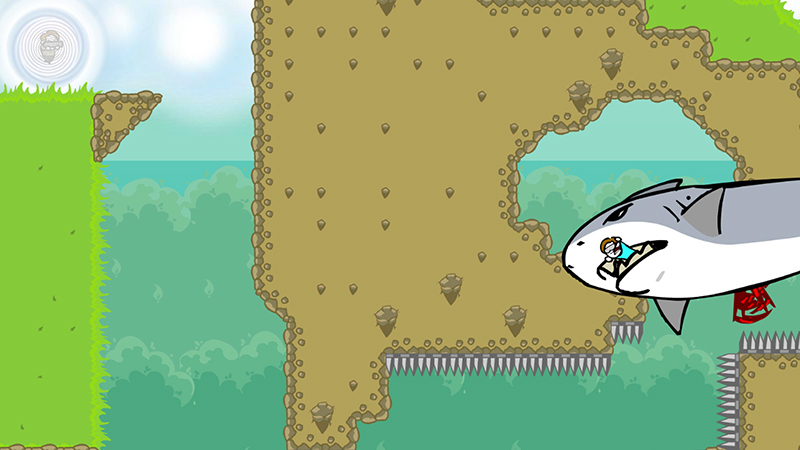Review: No Time to Explain
Community

No Time to Explain
tinyBuild GAMES
Reviewed on: Xbox One
Also On: PC
Street: 07.17
Despite the game’s title, let me try to explain this to you. In this puzzling, at times challenging platformer, a giant, interdimensional, time-travelling monster has kidnapped your future self, and it’s up to present you (as well as multiple alternate-reality yous) to traverse through dimensions, armed with a propulsion gun, trying to save yourself and find out what the fuck is going on. This is not a joke. What you just read is the legitimate plot of the crazy-as-fuck No Time to Explain. A re-mastered iteration of a Kickstarter project that originally released in 2011, indie developer tinyBuild Games has refined the title that started it all for them, adding a number of new elements to make for an unpredictable mess of wormhole-hopping fun.
The game kicks off with virtually no explanation. You start just jamming out in your house, and someone busts through the wall. “I am you from the future,” the sci-fi’d out looking you says, “No time to explain, follow me-” then, boom. a giant crab grabs future you, and you chase after the creature through an array of worlds collecting hats from time to time. It’s all very confusing. What’s not confusing is the familiar platforming mechanics. Don’t fall down holes, don’t touch the spikes and so on. if it ain’t broken and all of that. What No Time adds is a propulsion mechanic that makes you think through how to get to the next part. Some of the controls take some getting used to (LT to jump, right stick to use propulsion gun, Y to dance?), but the learning curve is minimal. In fact, “minimal” is a great way to describe tinyBuild’s first Xbox One game, with only one collectible (ridiculous hats), old school level design and a short, 10-item achievement list.
The gameplay, the collectibles, and whatever else you can list here is not what makes this game. Where the game flourishes is in its humor. Now, you can tell there wasn’t a sitcom-sized writing staff for the comedy—it’s all very basic—but it was the simplicity—the lack of pretension—that made it feel refreshing. I kept comparing the writing to Sunset Overdrive. Completely different games, I know, but in Sunset’s humor, I kept half-expecting the game to become sentient, walk out of my TV, and give me that “Get It?” grin every time it pulled out a forced meme reference. I loved Sunset Overdrive but that shit started to grind on me. Haha … get it? No Time to Explain took a totally different approach, with the manic pleas for help from your future self as he gets brutalized by monsters (they did get a bit repetitive though), and some incredibly well-timed sight gags, among other snickering moments. It’s obvious that the writers have their own sense of humor and don’t care who appreciates it, and I know I keep harping on this, but the way the story is told is in the same vein. It’s actually really nice to see a game designed with no fucks given.
If they aren’t already, indie games will soon be the lifeblood of the Xbox One, much like they are on Steam—especially as these studios keep releasing this sort of quality for such value. Though it feels fresh, No Time to Explain isn’t trying to reinvent the wheel. What it does, however, is show that with a few cool new ideas added to a familiar formula can make for something worthwhile. Maybe that’s the best way to explain this game—a piece of chaotic platforming that’s definitely worth your time.

